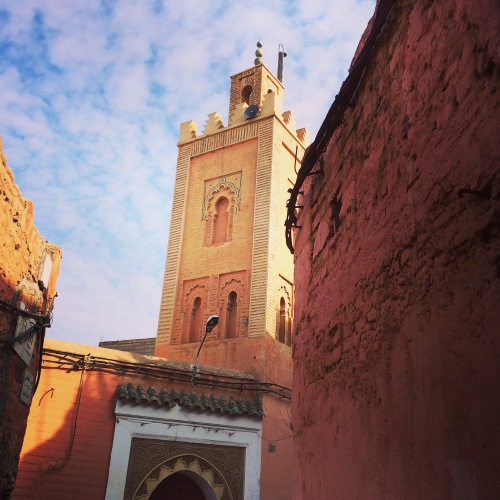The hilltop town of Orvieto, Umbria. Photo: Stefano Constantini
With its rich history – it was an Etruscan stronghold – narrow streets, inspiring views, abundance of places to eat and drink, and friendly locals, Orvieto is definitely one to add to your Italy travel list.
DeBella, a freelance writer, gives us the inside take on what to do, where to stay and, most importantly, where to eat and drink:
Because I live in Orvieto and write a blog named after my obsession with this town, people often ask me to recommend things to do and see on their visits here. In an effort to avoid duplicating my efforts, I began compiling a list – a sort of “The Best of Orvieto” – that I could easily pass along to others.

Photo: Stephen Bugno
It’s not a complete and comprehensive list, but rather a collection of my own personal favourites: Things to see, do, places to stay, where to eat, drink and how to explore.
The beauty of all this information is you’re able to tailor your itinerary to match your time constraints and interests. For instance, if you find yourself only in town for the afternoon, I suggest you go straight to the “must sees”, stopping for a quick bite at a bar, café or gelateria.
If you’re staying for the entire weekend, you’ll have a lot more time to enjoy the region’s famous wines and cuisine. Languishing for a week or more? Take a morning hike around the Anello della Rupe or sign up for an Italian language course. No matter the duration of your stay, I’ve designed this guide in the hope that it will help you to get the most out of your time in Orvieto.

Photo: The Local Italy
Getting here…
Orvieto is located almost smack-bang in the centre of Italy, in the region of Umbria. It sits alongside the Autostrada A-1 (the spinal cord of the country’s highway system connecting Milan and Naples), so it’s easily accessible by car or train (it’s on the regional train line between Rome Termini station and Florence’s Santa Maria Novella).
If arriving by train…
From outside Orvieto’s train station take the funicolare (funicular rail car) that runs every 10 minutes up to town. From Piazza Cahen take the picturesque 15-minute stroll up the Corso Cavour to the historical center or hop on the bus that drops visitors off at the Duomo or Piazza della Repubblica.
If arriving by car…
There are several parking lots in town, but the easiest to access is the Forum Boario, a carpark on the western end of the town, accessible from the Strada della Stazione to Via delle Conce. The covered garage charges a fee of € 1.50 per hour and has an escalator (scala mobile) or elevator (ascensore) up to town.
Must-sees…

Photo: Gerdy Ling
Duomo di Orvieto: This 14th century Roman Catholic cathedral is one of the most spectacular and important in Italy. Its Capello di Madonna di San Brizio contains Luca Signorelli’s (c. 1445 –1523) Last Judgment, considered by many to be his masterpiece.
Orvieto Underground: This tour leads you through an utterly fascinating subterranean network of medieval caves, tunnels and Etruscan wells.
Torre del Moro

Photo: Toni DeBella
The 13th century clock tower chimes on the hour, half and quarter hours, so you’ll never need a wristwatch. Climb the 270 stairs to the top for a bird’s eye view of Orvieto’s terracotta rooftops and surrounding countryside.
Pozzo di San Patrizio (St. Patrick’s Well)

Photo: Emilio Pocaro
Dating back to 1537, the largest of the town’s subterranean wells measures 62-metres-deep and has two spiral staircases, one for descending and one for ascending, that provided residents essential access to the water source at its base.
Crocifisso del Tufo Etruscan Necropolis (Etruscan Tombs): One of only two Etruscan necropolises in Umbria, it dates back to the mid-sixth century B.C. and is an enlightening example of the engineering superiority of this ancient but highly advanced civilization.
Where to stay…
****Hotel Piccolomini, Piazza Ranieri, 36; Email: info@palazzopiccolomini.it; Tel: (+39) 0763 341743; Website: http://www.palazzopiccolomini.it/en/
***Albergo Filippeschi, Via Filippeschi, 19; Email: info@albergofilippeschi.it; Tel: (+39) 0763.343275; Website: http://www.albergofilippeschi.it
B&B Ripa Medici, Vicolo Ripa Medici, 14; Email: ripamedici@libero.it; Tel: (+39) 0763 341343; Website: http://www.ripamedici.it/IndexEng.html
B&B Sant’Angelo, Via Sant’Angelo, 42; Email: info@bborvieto.com; Tel: (+39) 0763 341959; Website: http://www.bborvieto.com/
B&B La Piazzetta, Via Angelo da Orvieto, 10; Email: lapiazzettaorvieto@gmail.com; Website: http://www.lapiazzettaorvieto.it/indexeng.html
B&B Casa Vera, Vicolo Albani, 8; Email: info@casaveraorvieto.it; Tel: (+39) 349.430.0167 – (+39) 347. 811.9725; Website: http://www.casaveraorvieto.it/en/
B&B Magnolia, Via del Duomo, 29; Email: info@bblamagnolia.it; Tel: (+39) 0763.342808 – (+39) 349.462.0733; Website: http://www.bblamagnolia.it/?lang=en
Where to eat…

Photo: Mike Cross
Trattoria La Palomba. La Palomba is a typical Umbrian trattoria with a strong local following that never disappoints. Mention “Silvia” recommended it (an inside joke). Via Cipriano Menente, 16; Tel: 0763 343395 (Closed Wednesdays)
Trattoria Del Moro Aronne. Christian and his family serve food and wine that are out-of-this-world without sending your wallet into orbit. Via San Leonardo, 7; Tel: 0763 342763 (Closed Tuesdays)
Ristorante Capitano del Popolo. Located on the famous square of Piazza del Popolo – once the hotbed of Medieval Orvieto’s civic government (and now the setting for the town’s biweekly, open-air market) – Chef Valentina Santanicchio proudly sources her produce, literally, at her doorstep. When it comes to ‘eating well’ in Orvieto, Capitano del Popolo keeps both your taste buds and your good health in mind. Ristorante Capitano del Popolo, Piazza del Popolo 7/8/9; Tel 320 9287474; Facebook page https://www.facebook.com/capitanodelpopolo/?fref=ts
Bistrotters. Opened in the winter of 2015, this trendy, not-your-average-trattoria-style restaurant has become one of my favorite haunts for dining or enjoying cocktails on their expansive outdoor covered patio (they have heaters in the wintertime). Located on the piazza opposite the Church of San Giuseppe, halfway between the Torre del Moro and the Duomo, it’s close to everything, but also a world away.
Piazza Gualterio, 2, Orvieto; Email: info@bistrotters.it Tel: (+39) 0763.343978; Website:http://www.bistrotters.it/en/bistrotters-orvieto/(Open everday for lunch and dinner)
Pizzeria Charlie. The Poggi family is passionate about pizza and beer. Their beautiful outdoor courtyard is an excellent spot for dining in warmer weather. Via Loggia dei Mercanti, 14; Email: info@pizzeriacharlieorvieto.it; Tel: 0763.344766; Website:http://www.pizzeriacharlieorvieto.it (Closed Tuesdays)
Gelateria Pasqualetti. Made with only the freshest ingredients and natural flavours, it’s considered one of the top gelaterie in the country. Note: Their coffee-flavoured gelato recently won an award in an International ice cream competition. Corso Cavour, 56; Tel: (+39) 329 837 6959
Il Vincaffe. A wonderful enoteca with an outstanding selection of regional wines, it’s a great place to meet friends for an aperitif or to enjoy a light dinner. Via Filippeschi, 39; Email: info@ilvincaffe.it; Tel: (+39) 0763 340099; Website:http://www.ilvincaffe.it (Closed Mondays)
FEBO – Officina del Gusto.

Coffee at FEBO. Photo: The Local Italy
This cute and cozy spot has a café upstairs that serves lunch and dinner. I go there so often in the mornings that I no longer need to bother ordering. I just sit down and my caffe latte arrives at my table – perfect as always! Ah, to be a local. Via G. Michelangeli 7; Email: febobistrot@gmail.com; Tel: 0763 341057; Website:http://www.officinafebo.it/
Blue Bar. During the winter of 2008/2009, this was my living room. Owners Romina and Anthony’s little bar is a favourite of the ‘young crowd’ (and those of us who want to sit in their quiet salon and work on their computers without being glared at). The most recent addition to the Blue Bar family…their son, Leonardo! Via Giuseppe Garibaldi, 23 (Closed Sundays)
Caffe Cavour. To say this bar is ‘family-owned and operated’ would be an understatement. Roberto, his wife Luigia and their sons Simone and Giacomo work this brightly lit, warm-welcoming bar like it was part of their home. Offering outdoor seating on “The Corso” in warmer months (located just down from the intersection of Corso Cavour and Via del Duomo) and in a back room all-year-round, they not only serve coffee drinks and cocktails, but light meals and a great aperitivo as well! Corso Cavour 74; Tel 340 644 9360; Facebook: https://www.facebook.com/Caffè-Cavour-1475679886059292/?fref=ts
Caffe ClanDestino. Right on the main street, you can sit at bistro tables underneath umbrellas for prime people watching. Corso Cavour 40; Email: caffe.clandestino@facebook.com; Tel: 0763 340868
Festivals and special events
Natale in Orvieto. Holiday time is my favourite season in Orvieto. There are free pop-up concerts galore and white lights strung on practically every street and lane. Magical.
Umbria Jazz Winter. One of the most important jazz festivals in the world, it takes place annually in late December to early January.
Corpus Domini. The Eucharistic Miracle of Bolsena in 1263 prompted the construction ofOrvieto’s Duomo and established the Feast of Corpus Domini. Each summer the city commemorates the feast with a procession of over 400 costumes representing the municipal courts of the time, coats of arms, colored flags, armor, weapons, and helmets signifying Orvieto‘s military strength of that era.
Slowing it down
Orvieto has such a rich history – once Etruscan, then Medieval and now a vibrant, modern small city always buzzing with excitement, art, culture, music, food and wine. But it also offers a slower, peaceful pace that makes visitors feel as though they’ve stepped back in time…if only for a little while.
Toni DeBella is a freelance writer living in Orvieto. Her blog, Orvieto or Bust, is a collection of stories of a life in Italy.




























































